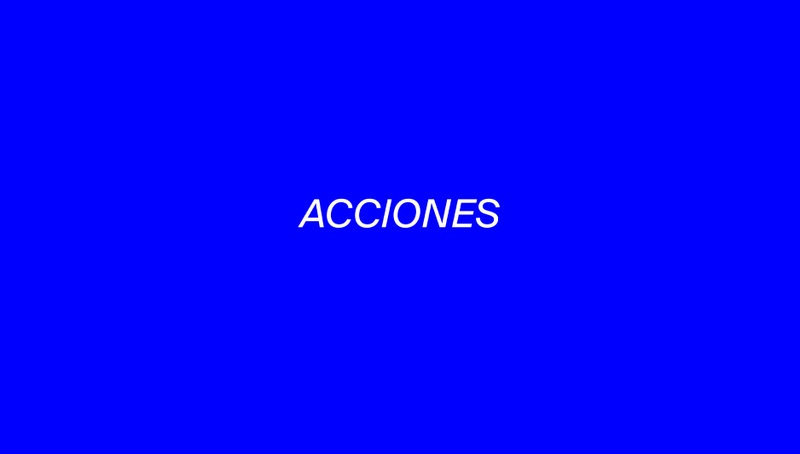An ‘action’ has become part of the essential lexicon of contemporary art, yet it is not part of a defined movement or theory. Instead actions encompass performances and proclamations, events and intimate moments. They may be performed in isolation, or as part of gatherings in which the audience become participant. The artist’s body may be imperilled, or they may simply be the agent of some change in the environment. Yet this broad range of meanings declaring an action shifts attention away from physical work of art, to the act of its making. And while an action might be as simple as a gesture or a declaration, it does not exist only in the moment it is performed. As art historian Galina Yelshevskaya suggests: “What happens during the performance is one part. Another is what is documented. And yet another is the way in which the performance spreads in rumours and the news, and how it remains in people’s memories.” 1
The transformation of art into an action was conceived in the earlier 20th century through radical ideas of surrealists in France, Constructivists in Russia, and Futurists in Italy, among other Modern Avant-Garde groups, many of whom proposed violent and destructive acts that could be art, if not realizing them. In the Second Manifesto of Surrealism, André Breton suggested: “The simplest Surrealist act consists of dashing down the street, pistol in hand, and firing blindly, as fast as you can pull the trigger, into the crowd”. 2 Wolfgang Paalen’s 1943 text Totem Art, became a link between European Surrealism and “Action Painting” in the Americas, proposing that the artist enacted something akin to an ecstatic ritual when making their work. These means of understanding painting, particularly Abstract Expressionism, as distinct from any form of image or visual representation, put the making of the work as of equal importance to its final form, the canvas a record of the act. 3 This distinction influenced the new artistic developments in the 60s - Conceptual Art, Happenings, Performance, and even Land Art. In this trajectory, actions and how they are recorded and circulated became a fundamental part of contemporary art.
- Robert Smithson
Francis Alÿs adopted some of the traditions of land art in an action in Peru. He describes Cuando la fe mueve montañas, Lima, Perú, 11 de abril de 2002 [When Faith Moves Mountains, Lima, Peru, April 11th, 2002] as “my attempt to democratize Land Art” with 500 volunteers shovelling earth from one side of a large sand dune to another. 4 The result was a minor displacement of the hillside that exists as much in the stories that the workers continued to tell as it did in the landscape. As much as it is informed by land art, then, it was a happening, an action completed and maintained by the participants.
Alÿs’s work began with actions in the streets of Mexico City, taking everyday activities out of context, diverting the social and economic cycles that exist informally in the City or placing himself within them. These took different forms of documentation—from videos, to paintings, to postcards that were distributed, entering in the circulation and mirroring the spaces in which the actions themselves appeared.
- Bruno Latour
Vanessa Beecroft’s actions in the 1990s and early 2000s took place inside and outside the museum, with models congregating semi-clothed to confront the audience. Their idealized bodies become abject under scrutiny and the models appear to scrutinize the public in return. Spencer Tunick’s actions invite the public to join mass naked gatherings in public spaces. Far from the orgiastic participation of Nitsch et al, they still operate to disturb the statu quo of social norms, distinguishing them from theatre.
And so, while actions are not a defined movement in contemporary art, they are an inherent concept within it. Whether made explicit or simply inferred, the act of creating a work is always a significant part of its context, and how it is to be understood. By focusing on actions, art can be seen as a network forged between artist and their work, and between what is presented in the gallery, how it came to be there, and how it affects the viewer.
Text by Kit Hammonds, Chief Curator
3 Wolfgang Paalen “Totem Art” in DYN magazine issue 4-5 (December, 1943). Born in Austria and living in Paris in the early 1930s, Paalen moved to Mexico in 1939 under exile, publishing DYN magazine and continuing to influence both Surrealist and Abstract painting until his death in 1953.
4 From the artist’s website: https://francisalys.com/when-faith-moves-mountains/






















